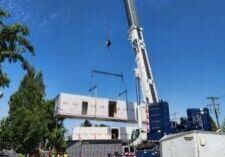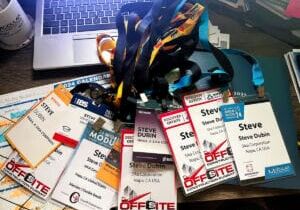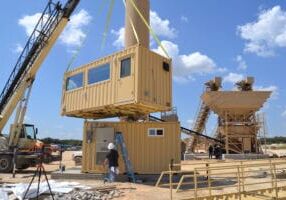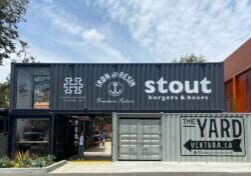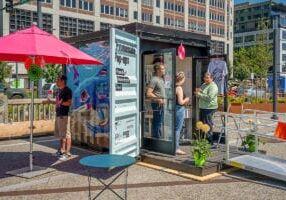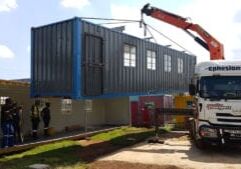The Cost of a Dated Education System to Our Workforce

Heather Wallace is Director of Communications / Project Manager at Momentum Innovations Group
It’s 5:30 in the morning at Mayfair School and Evin Jarrett is in his classroom preparing for the students who will begin trickling into his room around 6 am. This marks the beginning of his normal 12-hour day as he provides a place of refuge for students who are home alone early in the morning or after school.
Throughout the day there is constant knocking on his door - kids just dropping by to say “Hi”, to give him a hug, or begging him to let them hang out in his classroom. Some of them are skipping lunch and some are trying to skip other classes to be there, but one thing is very clear…kids desperately want to be in Mr. Jarrett’s middle school construction trades class.
His phenomenal hands-on learning experience serves 4th through 8th graders in a Title 1 school in Philadelphia. Once Evin feels a class has a solid understanding of safety, they are able to move on to learning to use power tools, basic plumbing (including sweating pipes) and electrical, masonry, framing, as well as introductions to technology and offsite construction.
One of the ways Evin is able to do so much hands-on learning in his classroom is by making theory the homework. Much of his success, however, comes from his ability to be flexible, as well as the relationships he has built with his students. He understands that each student’s home life plays a huge factor in their success. Those who do not have access to the internet at home aren’t penalized for not getting homework completed on time.
It is the only middle school program I’ve come across like this in the nation. And Mr. Jarrett is one of those special teachers. He understands the tremendous time commitment necessary for his program to be successful. And as a union member he doesn’t get paid more by showing up early or staying late.
“My students deserve my BEST at all times,” says Mr. Jarrett. “I don’t have the luxury of having bad days. I’m trying to change lives.”
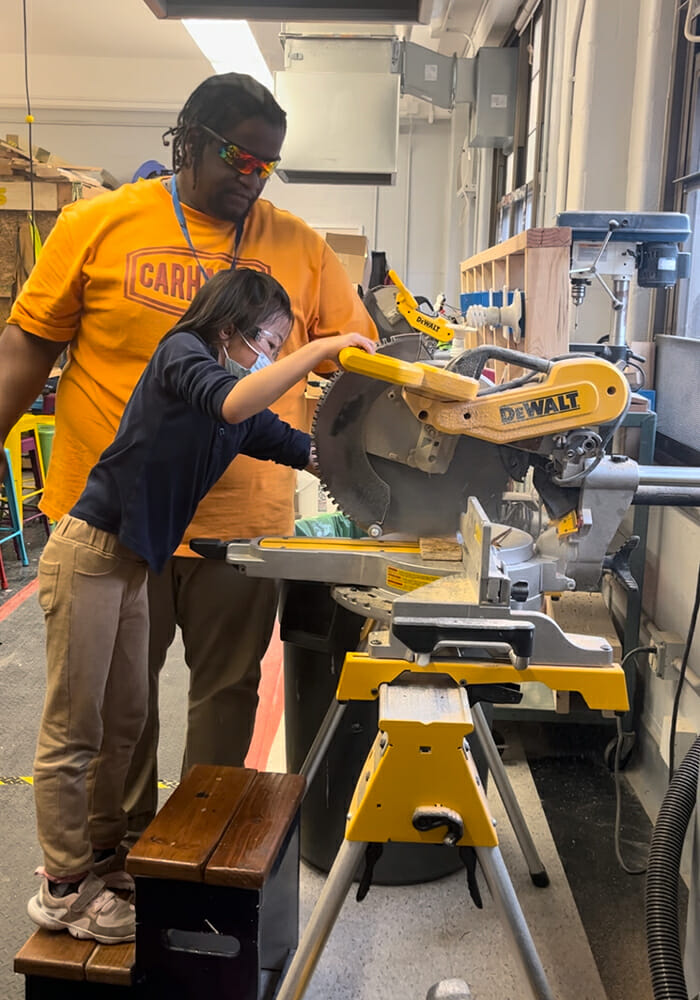
Students learn to safely use power tools in Mr. Jarrett’s class. (Photo: Heather Wallace)
Challenges in Public Education
As the construction industry continues to look for successful strategies to entice young workers to join, Mr. Jarrett’s class both emphasizes the benefits of careers in construction trades and also puts a spotlight on the huge challenges we have in the public education system.
Teaching in settings with large class sizes will always be a challenge, but Evin has an additional language barrier. Mayfair School is home to students who speak Spanish, Portuguese, Arabic, Vietnamese, Russian, French, Mandarin, and Khmer and sometimes there are 4-5 different languages being spoken in his class at one time.
Many of these students do not speak English so he has had to find innovative ways to translate safety and lesson plans into multiple languages. His two most common methods are utilizing students who are fluent, as translators; and AI bot recordings that translate his material into a required language.
And then there’s standardized testing. Overall, non-English speaking students do poorly on these tests for very obvious reasons. In Mr. Jarrett’s class they may also take a mock-NOCTI exam as an 8th grader. NOCTI provides credentialing tools to support Pennsylvania’s career and technical education (CTE) programs. Half of the test is hands-on and allows a person to demonstrate skills and technical knowledge; the other half is a written test - currently only available in English and normally given to Junior or Seniors in high school.
For Evin’s students who want a career in the construction trades, the transition from middle school to high school is rough and oftentimes disappointing. Like most public schools, Mayfair students must apply to their preferred high school and are put into a lottery system that determines the order in which students get to choose. Only a few high schools in the district offer construction CTE programs.
Emelyn, one of Evin’s star students, dreams of becoming a construction trades teacher. She has passed his mock-NOCTI exam but was not able to get into Swenson Arts and Technology High School. “I’m pretty frustrated,” says Emelyn. “They have a carpentry program and I wanted to continue the trades in the future. I know plumbing, electrical and carpentry - this is a very big disappointment.”
Evin’s school district initially promised that his top students would receive exceptions from the lottery and would be able to get into the high school trade program of their choice. But this has not panned out for students like Emelyn. For Evin’s program to be able to provide a meaningful pathway to construction, it will require the school administration and district to be 100% onboard and support him.
To date, the exceptions have not been approved and there is no solution for his students.
More Than Trades
Ask any employer what young people are lacking as they enter the workforce and “soft skills” is at the top of the list. Being comfortable with failure is one of the pillars for building soft skills.
Evin has successfully created a safe culture for failing forward in his classroom. His students - both the loud ones and the quiet ones - are eager to raise their hands hoping to provide a correct answer and have the opportunity to demonstrate part of their hands-on activity. And they are not deterred by a wrong answer - they simply raise their hand again.
His students are also encouraged and empowered to lead. In addition to assisting with lesson translations, his students also help with photography and run The Dope Student Podcast where they interview guests (using questions they write themselves) and oversee sound, podcast equipment and video cameras. This year Mr. Jarrett started working with Momentum Innovation Group to help test out offsite construction curriculum. Students built WikiHouse models and one student is now creating a “how-to” WikiHouse training video to help students better understand how to put it together.
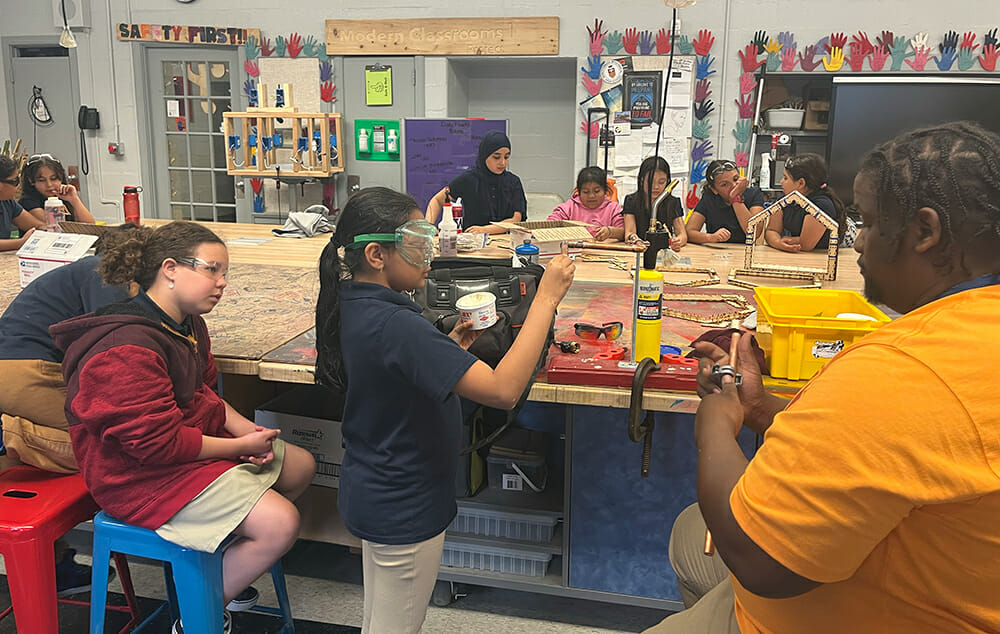
At times there are 4-5 different languages represented in Mr. Jarrett’s class at one time. (Photo: Heather Wallace)
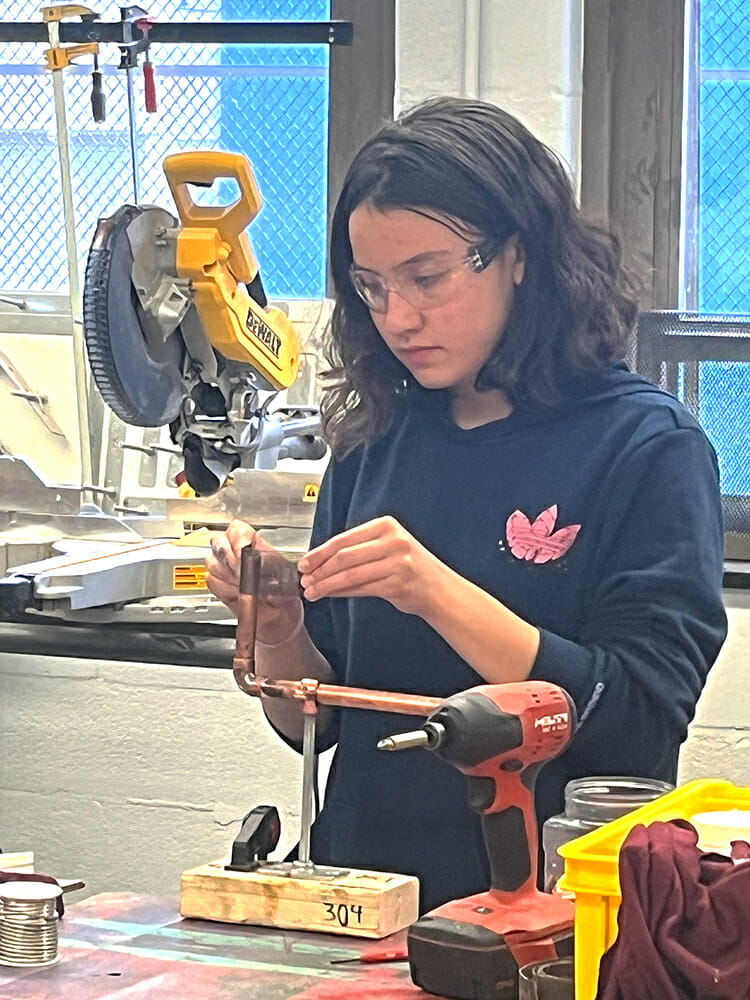
Emelyn working on a plumbing project. (Photo: Heather Wallace)
Related Listening:
From Stress Comes Strength: Developing the Construction Workforce of Tomorrow w/ Kevin O'Connor, Host of This Old House
Kevin O'Connor, longtime host of the Emmy Award-winning series This Old House, joins the podcast to share his perspective on the benefits of offsite construction practices in residential construction.
Kevin also talks about This Old House's Generation NEXT initiative, the construction industry's worker shortage, and how professionals within the industry can encourage young students and recent graduates to enter (and excel in) the trades.
What is the Role of Industry?
When the subject of workforce development arises there are many opinions on how our dwindling labor pool has become what it is. There is likely some truth to everyone’s response, but the real question should be: How do we help fix this mess? The reality of our labor shortage is that it’s our problem and each of us can play a part in helping to fix it. Kids need early exposure to the offsite construction industry.
On a positive note, there are a lot of people and organizations working on solutions. But industry has to be authentically involved. If your business is near schools, reach out to them and offer to send your kid-friendly employee to do an in-person presentation to elementary or middle school students about what your company does in the offsite construction space. Or create an engaging pre-recorded version that educators across the country can use in career exploration classes. Offer tours of your facility. Teach them about the exciting careers available in our industry. Unless they see these jobs they will never consider them as a career.
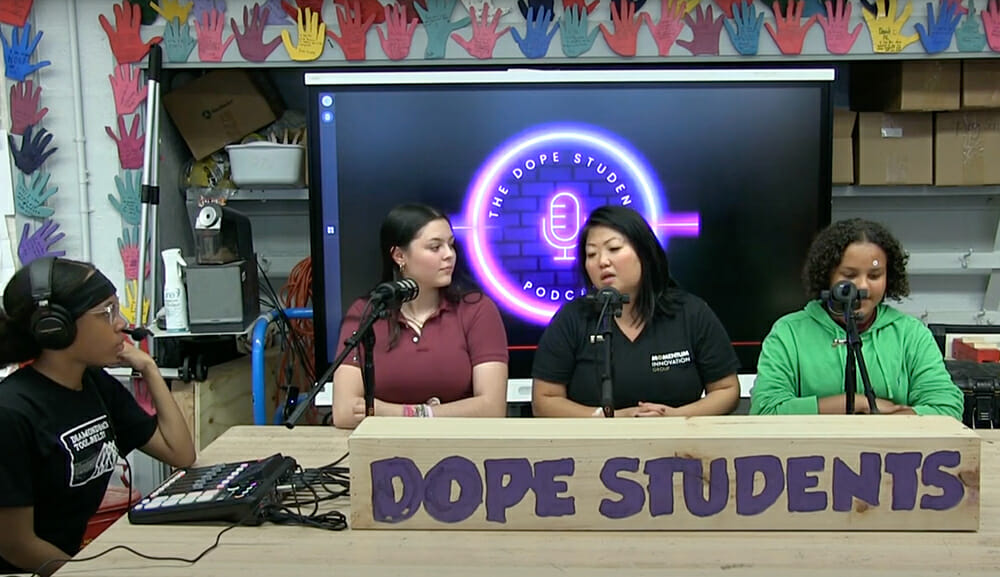
Students in Evin Jarrett’s construction trades CTE program run The Dope Student Podcast where they regularly interview industry professionals. (Photo: Evin Jarrett)
How Does Education Need to Change?
Primary and secondary education need to adapt to infuse career exploration and development with core curriculum. Every student should have the opportunity to learn about engineering or home economics while learning math. Let them learn about HVAC systems in science class. Have them explore social issues by learning about the construction industry and how housing shortages impact society.
Let’s take the focus away from what 4-year school they are going to and instead start asking them early on: How do you want to change the world? Education should act as building blocks to get them to the place where they can dream big and become problem solvers of the future. But for students like Emelyn, this has not been her experience. For two years she was forced to take Spanish classes - she was already fluent in Spanish. She could have spent that time in Evin’s classroom as a teaching assistant - a far better fit and use of her time and it builds on what she’s passionate about.
The Carnegie Foundation for the Advancement of Teaching - the same organization that designed our current grading system - is exploring how to update our grading system to provide students credit and acknowledgement for activities like working full-time during high school. For this to work, schools and industry will also have to shift their thinking and redefine what success looks like and what it really means.
More from Modular Advantage
AI, Faster Sets, and Automation: The Future of Modular is at World of Modular
While the modular building industry has long known that it can be an effective solution to increase affordable housing, the word is slowly spreading to more mainstream audiences. Three presentations at this year’s World of Modular in Las Vegas hope to provide insight and direction for those seeking a real solution to the crisis.
An Insider’s Guide to the 2025 World of Modular
The Modular Building Institute is bringing its global World of Modular (WOM) event back to Las Vegas, and with it comes some of the industry’s best opportunities for networking, business development, and education. Over the course of the conference’s four days, there will be numerous opportunities for attendees to connect, learn, and leverage event resources to get the most out of the conference.
Affordable Housing Now: The Industry’s Best Bring New Solutions to World of Modular
While the modular building industry has long known that it can be an effective solution to increase affordable housing, the word is slowly spreading to more mainstream audiences. Three presentations at this year’s World of Modular in Las Vegas hope to provide insight and direction for those seeking a real solution to the crisis.
Opportunities for Innovation in Modular Offsite Construction
Modular Offsite Construction has already shattered the myth that it only produces uninspired, box-like designs. Architectural innovations in module geometry, configurations, materials, and products make it possible to create visually stunning buildings without sacrificing functionality or efficiency.
Safe Modular Construction with Aerofilm Air Caster Transport
In collaboration with Aerofilm Systems, Heijmans developed innovative skids using air caster technology for moving modules easily and safely. These pallets are equipped with an auto-flow system, making operation extremely simple.
Miles, Modules, and Memes: Building a Modular Network One Flight at a Time
At the end of the day, social media is just another tool for building connections, and like any other tool, needs to be used skillfully to work properly. Use social media thoughtfully, and it will open doors to real opportunities and relationships you didn’t even see coming.
Falcon Structures: Thinking Inside the Box
Some of Falcon’s latest projects include creating container solutions for New York’s Central Park and an East Coast professional baseball team. More and more, Falcon is shipping out container bathrooms and locker rooms to improve traditionally difficult work environments, like those in oil and gas or construction.
UrbanBloc—From Passion to Industry Leader
UrbanBloc specializes in three main categories or markets – what they call “Phase 0” projects, amenities, and urban infill. Clients are often attracted to shipping containers because from a real estate perspective they are considered an asset. Having the flexibility to move and transport these assets allows owners to respond to different circumstances in a fluid manner that they can’t get with standard construction.
The Hospitality Game-Changer
“Hospitality is about more than just providing a service – it’s about delivering an experience,” says Anthony Halsch, CEO of ROXBOX. “And that’s where containers thrive. They allow us to create spaces that are unique, efficient, and sustainable.”
Container Conversions Counts on Simplicity to Provide Critical Solutions
Container Conversions has fabricated and developed thousands of containers for varied projects, including rental refrigeration options, offices, kitchens, temporary workplace housing, and mobile health clinics.



